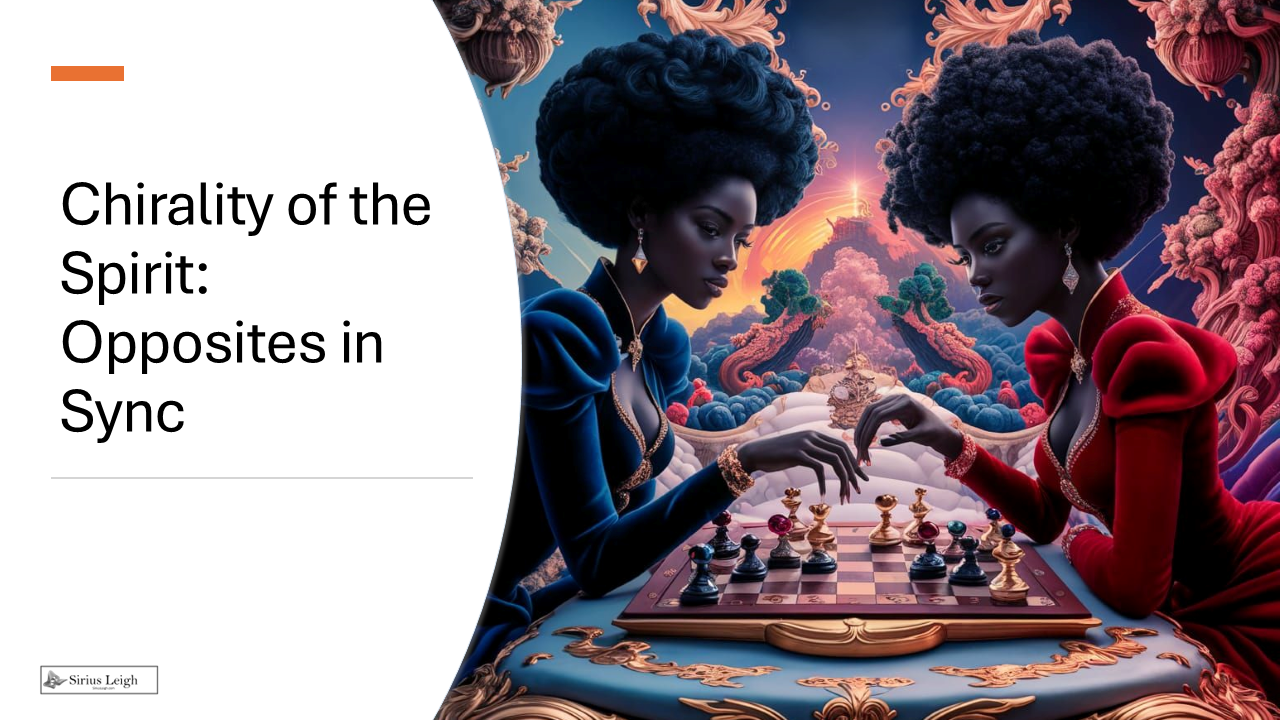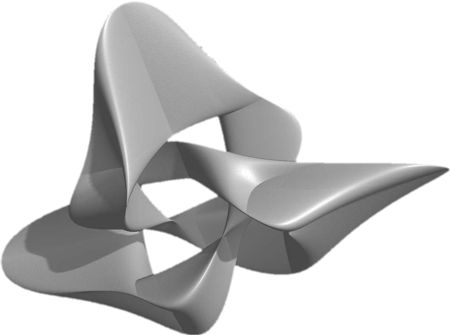Chiral
Chirality /kaɪˈrælɪtiː/ is a property of asymmetry important in several branches of science. The word chirality is derived from the Greek χείρ (kheir), “hand”, a familiar chiral object. A chiral object and its mirror image are called enantiomorphs (Greek, “opposite forms”)
-Wikipedia
The word Chiral is Sirius Leigh used often.
We often think of opposites as adversaries, good – bad, short – tall, dry – wet etc. However, in the universal sense, opposite doesn’t automatically imply adversarial. Chirality is the word for ‘handedness.’
For example, left is the opposite of right in US politics, but when it comes to our personhood, left and right are just different sides of the same. Two sides of the same being, not oppositional. Imagine how difficult it would be to walk if your left foot and right foot were adversaries.
Viewing certain metaphysical relationships in terms of chirality instead of dualism proposes that, rather than being in entirely separate realms, the relationships behave like chiral pairs – complementary but non-superimposable aspects of a single reality.
The intricate relationship between nature’s chirality and scientific research highlights the beauty, complexity and connectedness of the natural world.
In the world of gravity and mass, Chirality is a fundamental natural concept that influences various scientific studies and applications.

Chirality teaches us something we don’t often hear in spiritual spaces: that difference is not the enemy of unity. That reflection does not mean sameness. That what moves us forward in our spiritual journey isn’t collapsing opposites into one or choosing sides between them. It’s honoring the distinctness of each and learning how they spiral together.
In Science
Chirality is a concept that plays a crucial role the Science of Nature. It refers to the property of asymmetry in an object, molecule, or system that cannot be superimposed onto its mirror image. In simpler terms, a chiral molecule is one that has a non-superimposable mirror image, much like our hands.
This property arises from the arrangement of atoms or groups around a central point, often seen in biological molecules like amino acids, sugars, and DNA.
Chirality is prevalent in nature, with many living organisms exhibiting chiral characteristics. For example, the amino acids that make up proteins in our bodies are chiral, with left-handed amino acids playing a crucial role in biological processes. Additionally, the DNA double helix structure is chiral, with the spiraling arrangement of nucleotides following a specific direction.
Chirality is also vital to chemistry, biology, pharmacology, and even astrophysics. In chemistry, chiral molecules can have different properties and interactions, leading to unique reactivity and biological effects. In biology, chirality influences protein folding, enzyme reactions, and drug-target interactions, highlighting its significance in drug discovery and development.
In materials science, researchers are exploring the use of chiral structures in nanotechnology and optics. Chiral nanomaterials exhibit unique optical properties due to their asymmetry, making them ideal for applications in sensors, catalysts, and drug delivery systems.
By understanding and harnessing the nature of chirality, scientists can unlock new possibilities in drug development, materials science, philosophy, neuroscience, and beyond.
